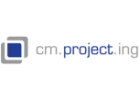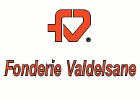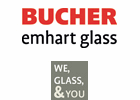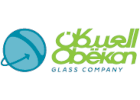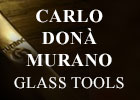INFO
Essas são as informações básicas da empresa. A empresa fornece informações detalhadas adicionais, tais como Web site, fax e números de telefone, pessoas de contacto, a história e os dados da empresa.
Para obter acesso a essa informação, ou para impressão do perfil de empresa, é preciso ter uma validade "Profile Access" para glassglobal.com. Informações para reservas estão disponíveis no Informaçaos e preços .
Informações de contato
| Endereço | Frank van den Ham |
| Get in contact with Frank van den Ham |
Produtos / Máquinas
Glass fusing is a very old technique. Over 4000 years ago people were
already fusing pieces of glass together. However the invention and widespread introduction of glass blowing during the 1st century B.C. meant that, in a relatively short period, glass fusing became a forgotten art. One could say that for about 2000 years fusing had been a common technique and then for 2000 years it was not used at all. With the only exception to this rule being towards the end of the 19th century, when the technique ´pate de verre´ (fused powdered glass) was being used in France. It was only in the 1950´s that we can say that the technique of glass fusing was re-invented or re- discovered. Acknowledged pioneers in this old/new technique were Frances and Michael Higgins from New York.
The term ´fusing´ refers to the technique where several pieces of glass, usually of different colours, are melted together in a kiln - usually an electric powered oven - this creates one unified piece of glass.
Van den Ham´s works take many firings to achieve their rich intensity and complexity of colour, pattern and form. He begins by taking sheets of prefabricated coloured glass from these he cuts his patterns, fits the different parts together and finally melts them together into one sheet in the kiln. The process which involves temperatures up to 900 degrees celcius can take anything from 24 - 48 hours. This firing process is repeated as often as necessary in order to reach the desired effect. When he has achieved his final flat sheet of coloured glass it is time for the last firing. This is when the form or shape of the object is created.
The sheet of glass is put once more into the kiln and with the help of ´moulds´ is ´slumped´ into a form. When the glass is at a temperature of about 650 degrees celcius it begins to soften and to stretch. By careful control of the weight, temperature and viscosity of the glass, a specific shape can be achieved. The duration of the final firing process very much depends upon the particular object that is being made. It can take anything from 24 to 72 hours and sometimes it can be even longer.
Final finishing of the piece is done using a range of cold-working techniques - cutting, grinding, polishing, sandblasting and sometimes engraving.
Fusing is a technique that enables the artist to use colour and to create patterns and drawings in a very precise way.
Forming the glass asks for much experience but once that experience is gained, the artist can create exactly the shapes and forms that he wants.


